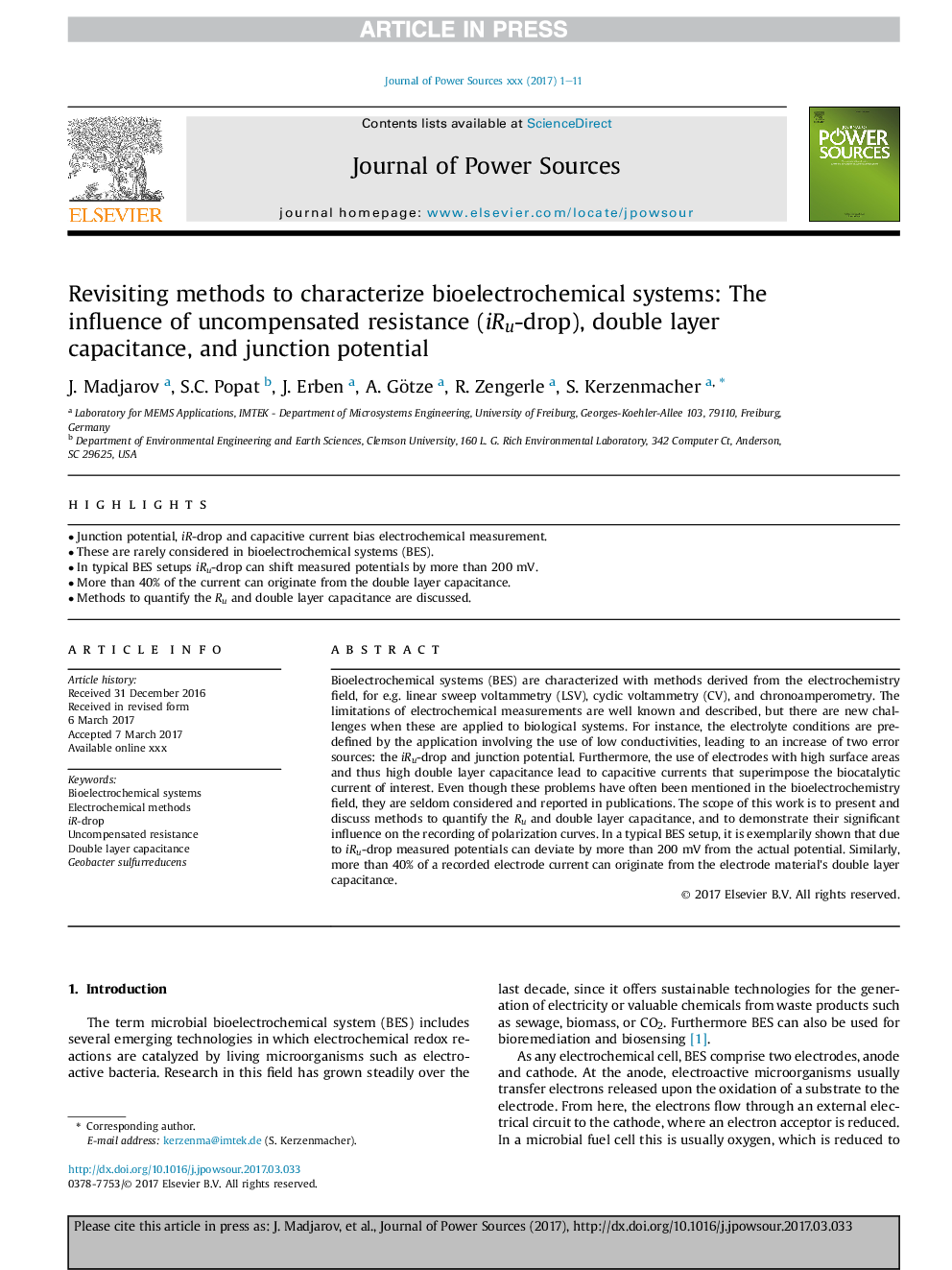| Article ID | Journal | Published Year | Pages | File Type |
|---|---|---|---|---|
| 5149286 | Journal of Power Sources | 2017 | 11 Pages |
Abstract
Bioelectrochemical systems (BES) are characterized with methods derived from the electrochemistry field, for e.g. linear sweep voltammetry (LSV), cyclic voltammetry (CV), and chronoamperometry. The limitations of electrochemical measurements are well known and described, but there are new challenges when these are applied to biological systems. For instance, the electrolyte conditions are predefined by the application involving the use of low conductivities, leading to an increase of two error sources: the iRu-drop and junction potential. Furthermore, the use of electrodes with high surface areas and thus high double layer capacitance lead to capacitive currents that superimpose the biocatalytic current of interest. Even though these problems have often been mentioned in the bioelectrochemistry field, they are seldom considered and reported in publications. The scope of this work is to present and discuss methods to quantify the Ru and double layer capacitance, and to demonstrate their significant influence on the recording of polarization curves. In a typical BES setup, it is exemplarily shown that due to iRu-drop measured potentials can deviate by more than 200Â mV from the actual potential. Similarly, more than 40% of a recorded electrode current can originate from the electrode material's double layer capacitance.
Keywords
Related Topics
Physical Sciences and Engineering
Chemistry
Electrochemistry
Authors
J. Madjarov, S.C. Popat, J. Erben, A. Götze, R. Zengerle, S. Kerzenmacher,
